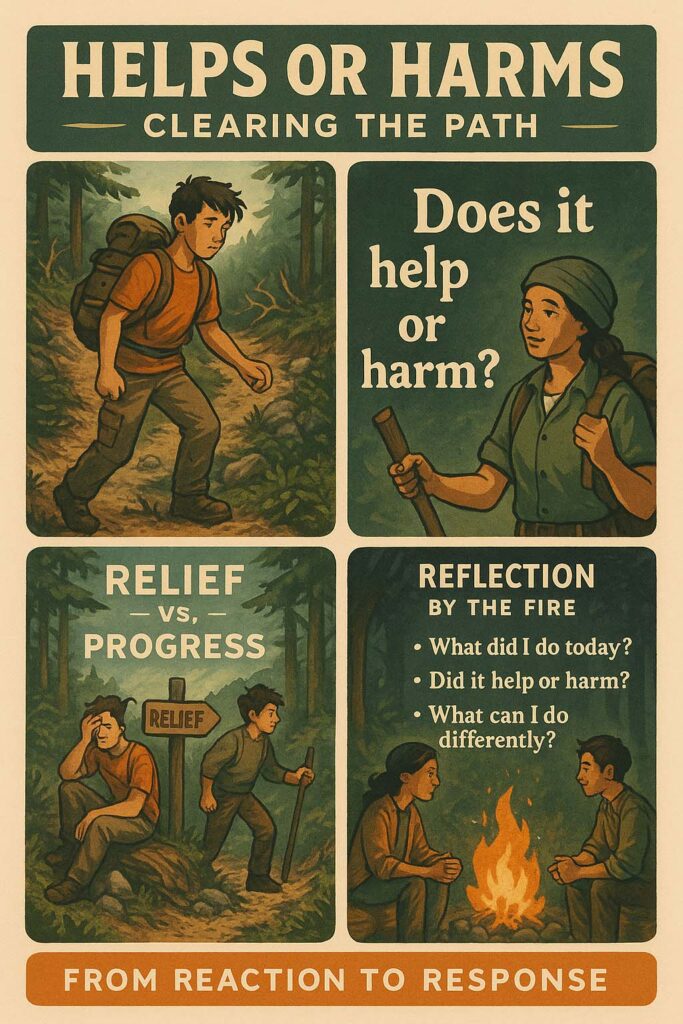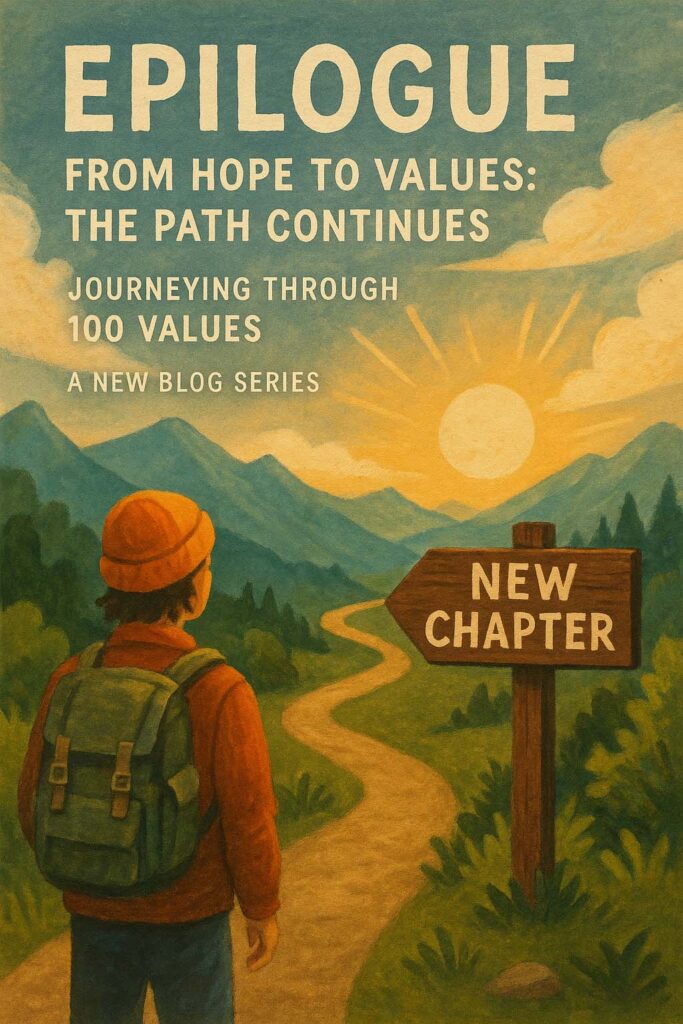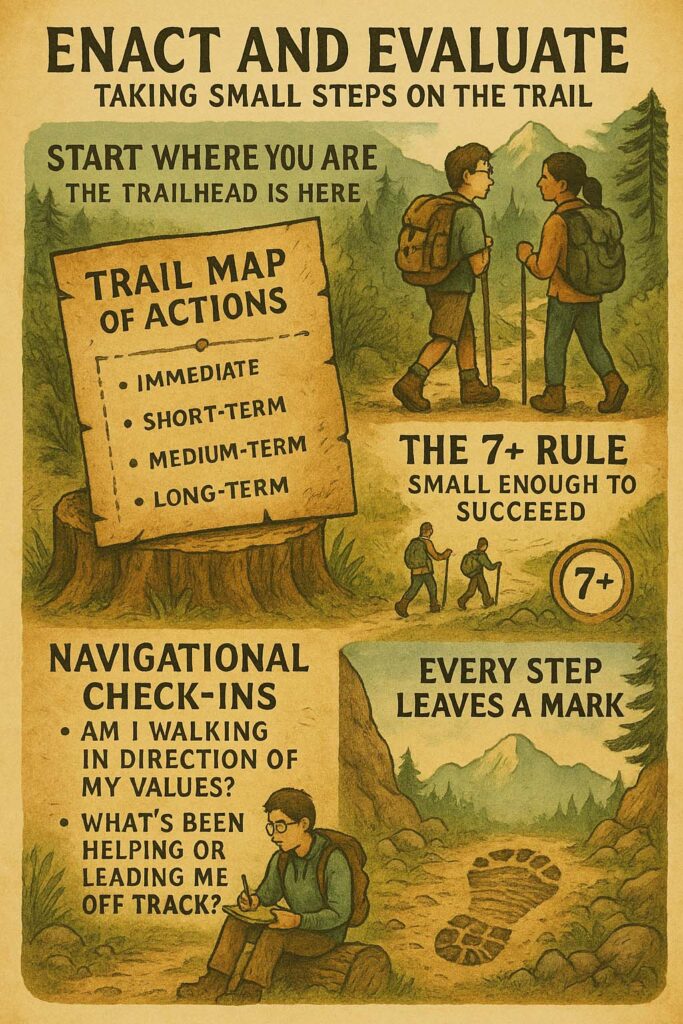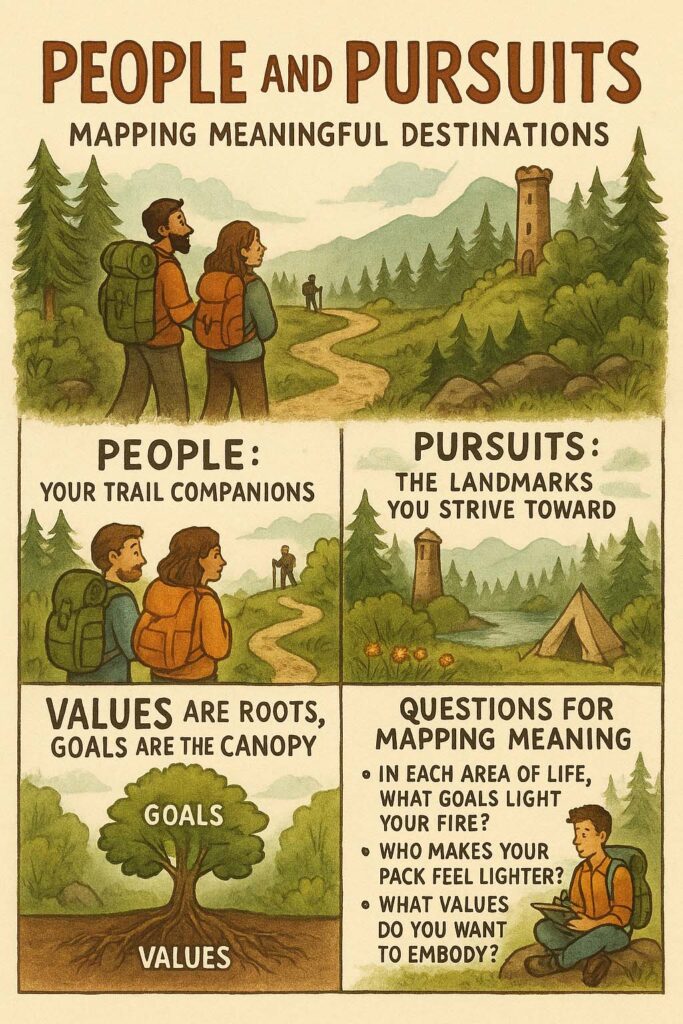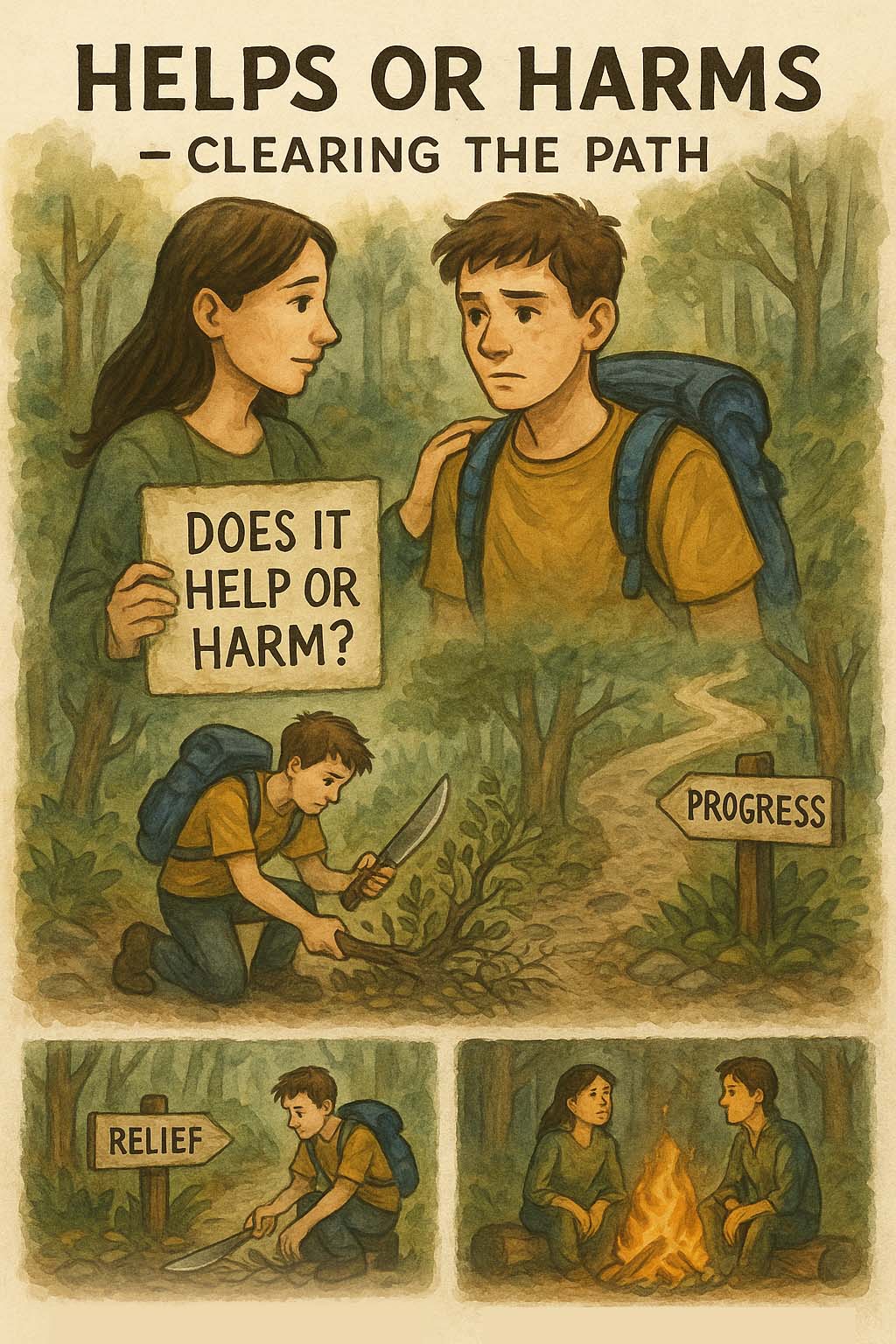
🪓 Helps or Harms
The trail isn’t always clear. Sometimes Alex finds himself walking in circles, following a deer track that leads nowhere. Other times, he charges ahead, only to trip over an unseen root or land in a patch of thorns. It’s not because he’s careless. It’s because the ADHD trail is full of surprises—sudden ravines of emotion, tangled thoughts, and steep inclines of overwhelm.
Maya, walking steadily beside him, introduces a simple but powerful tool. Not a compass. Not a map. A question.
“Does it help or harm?”
She calls it the magic question, and it’s the machete they use to clear their path when the undergrowth thickens. It’s the tool Alex can pull out whenever he feels lost, stuck, or about to act on impulse. Whether he’s looking back at a decision, stuck in the middle of something messy, or guessing his next move, the question stays the same.
“What I did—did it help or harm?”
“What I’m doing—does it help or harm?”
“What I’m planning to do—will it help or harm?”
🧠 From Automatic to Intentional
Sometimes the ADHD terrain feels like it’s moving faster than Alex can keep up. His feet move before he’s even chosen a direction. The chatter in his mind pushes him down trails of procrastination, avoidance, or impulsive fixes. He calls these shortcut traps—actions that offer fast relief but steer him far from the kind of person he wants to be.
When Maya spots this happening, she encourages a different pace: pause, breathe, assess. They step off the trail for a moment and climb a nearby lookout—what Maya calls the “balcony view.” From here, Alex can see the bigger picture: where he’s been, where he is, and where he’s headed.
🥾 Relief vs. Progress
On the trail, not every step forward is helpful. Some just circle back. Alex learns to notice the difference between relief and progress. Relief is that tempting log to collapse on, or the detour that avoids the climb. Progress is the hard step up that leads somewhere meaningful.
Isolating after social embarrassment might feel safer. Doom-scrolling might offer distraction. Snapping at a friend might release tension. But when Alex asks, “Does it help or harm?”, the answer shifts. Harm often hides behind short-term comfort. Help often wears the face of discomfort with direction.
🌲 Action Appraisal in Practice
Maya teaches Alex that using the magic question is like checking trail signs. It doesn’t blame or shame—it guides. Whether reflecting on a past misstep or weighing a choice in the present, this question becomes his internal compass.
To get the most from this tool, Maya encourages emotional distance before decision-making. That means waiting until the storm in his chest has calmed before choosing a path. They find that even a short breath or a break by a stream helps clear the mental fog.
Together, they start building a Trail Ledger—a list of Alex’s most helpful and harmful actions. Some entries surprise him. He learns that certain routines, even when boring, are actually supportive trail markers. Others, like late-night scrolling or ghosting responsibilities, always land him in thorny patches.
🏕️ Reflection by the Fire
At camp, Maya helps Alex reflect—not with criticism, but with curiosity:
- What actions have helped me stay true to my values today?
- Which ones pulled me away from the kind of person I want to be?
- What’s one small step I can take tomorrow to shift my path?
By checking in regularly, Alex starts to make different choices—not because he’s being “disciplined,” but because he’s moving toward something that matters. The path gets clearer—not easier, but more meaningful.
🌿 From Reaction to Response
On this journey, Alex isn’t expected to get every step right. What matters is that he notices his steps. The magic question turns automatic reactions into conscious responses. And slowly, the trail that once felt chaotic becomes one he can walk with greater clarity and care.
In the next chapter, Maya will guide Alex in setting his inner compass—by identifying the values that matter most in his life. These values will give direction to his steps, especially when the trail gets foggy or tough.
